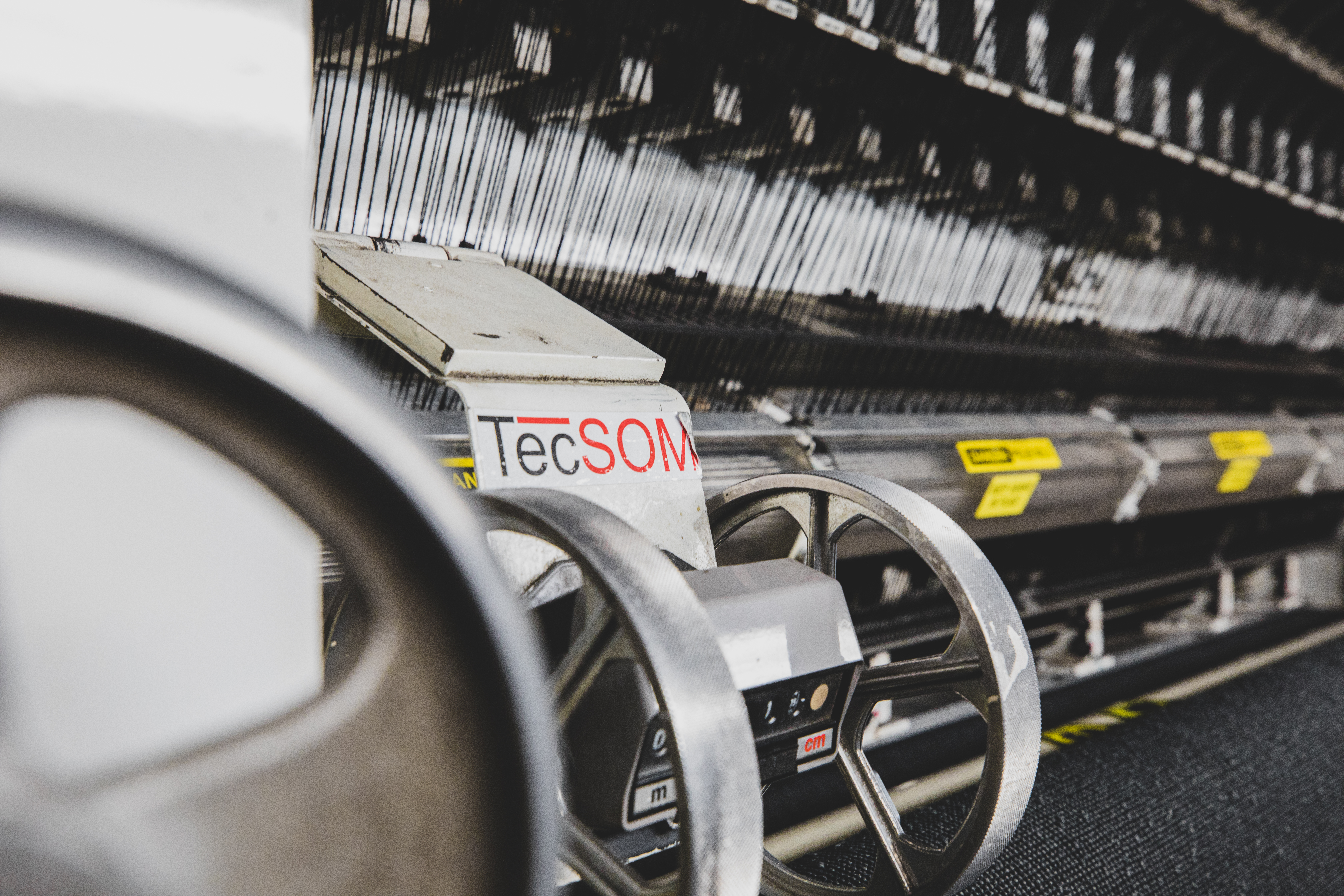Stéphane started at Tecsom in 1995 as a manufacturing agent. In 2000, he had an opportunity to join the R&D Department of which he is in charge nowadays.
What does your job entail?
I work on the development of new products. In other words, I accompany customers' s particular requests such as special colors, patterns or new tufting techniques.
What does your job entail?
I work on the development of new products. In other words, I accompany customers' s particular requests such as special colors, patterns or new tufting techniques.
What tufting techniques are used at TecSOM?
There are three tufting techniques: loop pile, multi loop pile and cut pile. At TecSOM, we use all three of them, with tufting machines specialized for each type of product.
Concretely, how does it work?
Yarns of the selected spools are driven to the tufting machine via cylinders that descend to a needle bar that mechanically picks them on a support to form rows of loops. Then, the product passes through a coating line in which the yarns are fixed with glue and the textile equipped with a backing.
Concretely, how does it work?
Yarns of the selected spools are driven to the tufting machine via cylinders that descend to a needle bar that mechanically picks them on a support to form rows of loops. Then, the product passes through a coating line in which the yarns are fixed with glue and the textile equipped with a backing.

Is tufted carpet a product in demand?
Yes and particularly for interior decoration of tertiary sector spaces such as offices or hotels. TecSOM products are very popular because they are highly resistant and very stable.
What do you like about your job?
I’ve been working in R&D department for 20 years now and I never get tired! Tasks are not repetitive, every day is different and I like working at the client’s request, it’s quite interesting.
I’ve been working in R&D department for 20 years now and I never get tired! Tasks are not repetitive, every day is different and I like working at the client’s request, it’s quite interesting.



